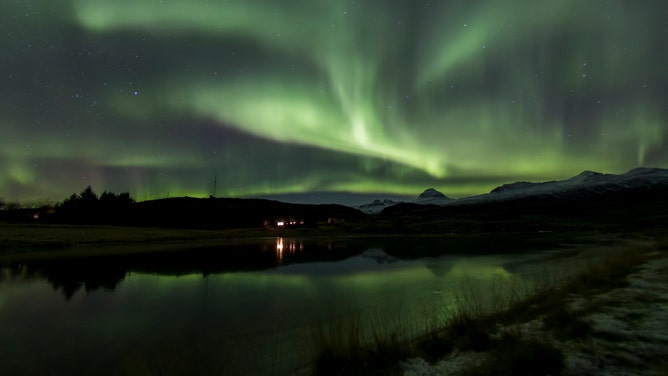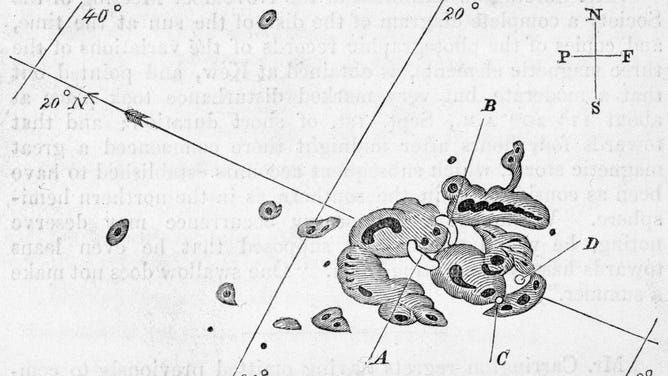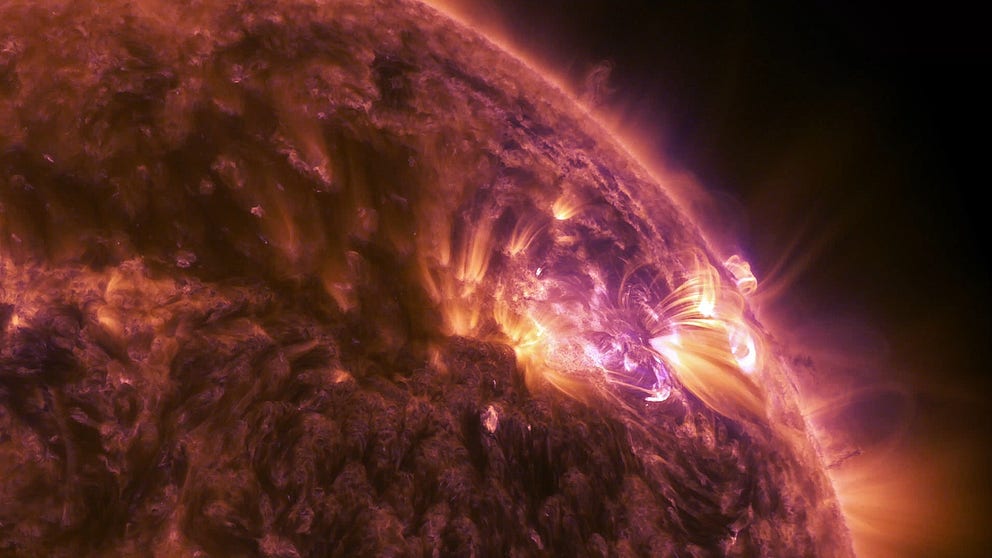A history of Earth's greatest solar storms, including the day the Northern Lights covered the planet
The "Carrington Event" of 1859 still counts as the strongest solar storm event on record, but there have been more recent instances of the sun flexing its muscle.
Space weather explained: What is a solar flare?
The largest explosion in the solar system, a solar flare is an explosion of energy that occurs on the sun’s surface, often appearing as a localized burst of bright light.
It's late summer in 1859, but what seems like a normal day suddenly becomes surreal. Telegraph lines mysteriously start sparking and fail; some telegraph offices erupt in flames. Much of the communication across the globe goes dark for several hours.
Later as night falls, the skies erupt in a color as a brilliant display of the Northern Lights covers nearly the entire planet with reports as far south as Tahiti, Cuba, Jamaica, Colombia and Hawaii.
LEARN: 7 THINGS TO KNOW ABOUT THE NORTHERN LIGHTS
Witnesses of the time speak of auroras so bright that those in New England were able to read the newspaper in the middle of the night. And it was so bright in Colorado, that miners thought the sun was coming up, and it was time to begin their shifts.

The Northern Lights across the sky in Iceland.
(Anna Henly Photography,Anna Henly / Barcroft Media / Getty Images)
What had just happened was a solar storm for the ages.
The storm, named the Carrington Event after British astronomer Richard Carrington who witnessed and documented the event, struck with surprising speed on Sept. 1. Carrington was in his private observatory tracking the sun when he noticed an unusually large cluster of sun spots. Suddenly, the spots were awash in blinding light.

Illustrated plate based on observations by the British astronomer Richard Christopher Carrington (1826-1875), showing a group of sunspots, taken from 'Memoirs of the Royal Astronomical Society', 1861. On 1st September 1859 in the course of these observations, he noticed two areas in the middle of a sunspot group grow rapidly brighter (points A and B in the sketch), before dimming and disappearing at points C and D. This was the first recorded observation of a solar flare.
(SSPL / Getty Images)
"What Carrington saw was a white-light solar flare -- a magnetic explosion on the sun," explains David Hathaway, solar physics team lead at NASA's Marshall Space Flight Center in Huntsville, Alabama.
Just hours later, a coronal mass ejection hurtled across space and struck the Earth's magnetic field, resulting in an extreme geomagnetic storm. The impact caused the magnetic field to shake and quiver, which then induced enormous electrical currents that surged through telegraph lines, according to NASA.
But while the Carrington Event still stands as the top solar storm in the record books, several other solar flares have wreaked havoc. On Aug. 4, 1972, a solar flare knocked out long-distance telephone communications across Illinois, according to NASA.
Then on March 13, 1989, all of Quebec lost power when an extremely strong solar flare disrupted power transmission from the province's main power generating station, leaving 6 million in the dark for nine hours. Power surges from that event also melted power transformers in New Jersey.
Even in more modern-day times, solar flares can cause issues. In December 2005, X-rays from a solar storm disrupted satellite and GPS communications for about 10 minutes. A short time in theory, but "I would not have wanted to be on a commercial airplane being guided in for a landing by GPS or on a ship being docked by GPS during that 10 minutes," said Louis J. Lanzerotti, retired Distinguished Member of Technical Staff at Bell Laboratories and editor of the journal Space Weather.
A communications nightmare in the making?
While solar flares don’t have any direct effects on human health, there's concern over what a Carrington-level solar event would do to infrastructure in the modern communications world.
According to NASA, researchers from Lloyd’s of London and the Atmospheric and Environmental Research agency in the United States studied what would happen if a Carrington-class event struck today and estimate it would cause anywhere from $600 million to $2.6 trillion in damage alone to the U.S., and could cause global electrical disruptions, blackouts and electrical grid damage.
"Cascading failures of electrical grids, especially in New England in the United States, are also particularly likely during a Carrington-class event," NASA officials said. "Power restoration estimates range anywhere from a week to the least affected areas to more than a year to the hardest-hit regions."
But the possible impacts don't stop there. Scientists worry electronic payments would crash, electric vehicle charging stations could become unusable for some time, as would ATMs, which rely on internet and satellite links to verify account information.
GPS navigation signals could be crippled, and planes flying over oceans could experience navigation errors and communication blackouts, NASA says. Astronauts on the International Space Station would have to shelter in a radiation-protection module, or if enough time permitted, evacuate the station and come home.
Earth dodged a bullet in 2012
A flare of that magnitude nearly happened just a decade ago. In July 2012, a Carrington-class solar storm erupted from the sun. But luckily, the sun’s rotation at the time had the solar flare aim its wrath away from Earth, missing a direct hit by just nine days. And research suggests these magnitudes of solar storms may not be as rare as once thought.
"The Carrington Event was not unique," Hisashi Hayakawa of Japan's Nagoya University told SpaceWeather.com in 2020. His recent study of solar storms has uncovered other events of comparable intensity. "While the Carrington Event has long been considered a once-in-a-century catastrophe, historical observations warn us that this may be something that occurs much more frequently."
The good news is NASA has several satellites monitoring the sun these days and could provide a multi-day warning of the impending solar storm, giving us time to shut down and protect major communication systems, pause transoceanic flights and essentially hunker down until the storm passed.
"But a harsh truth remains," NASA scientists warned in 2020. "161 years after the Carrington Event, the world is still not prepared for a large-scale solar storm and what it would do to us."
